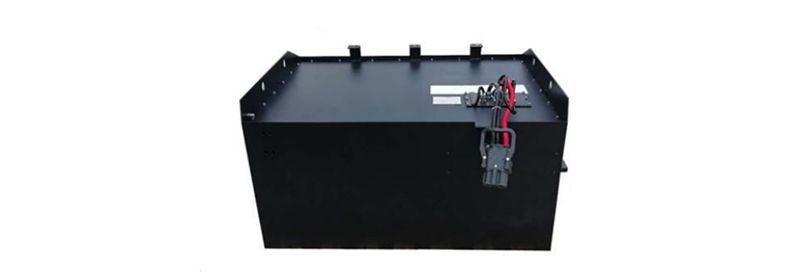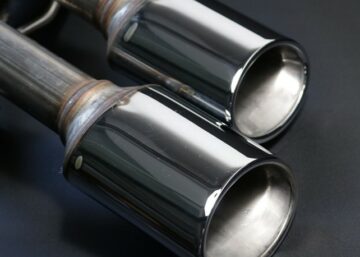Manufacturing processes used in the electric car parts industry must be accurate, precise, and compatible with complex product designs. These requirements, like demands for prototyping and real-time production, and the restriction on the compatible material for electric car parts narrow down the choice of the manufacturing process.
As a result, choosing one can be very challenging. This article discusses EV parts manufacturing, common electric auto parts, and the common auto part manufacturing processes used for electric car parts.
Electric Car Parts Importance and Function
Every electric car is unique in terms of its build and features. However, irrespective of their uniqueness and sophisticated features, the following parts are the primary components present in electric cars.
 Traction Battery Pack
Traction Battery Pack
The traction battery pack determines the electric car’s power and range. It functions as a means of storing electrical energy. The more the capability of the battery, the higher the range.
 Power Inverter
Power Inverter
The power inverter is responsible for converting the direct current to the alternate current responsible for powering the motor. Additionally, the inverter converts AC generated by regenerative braking into DC, which recharges the battery.
 Controller
Controller
The controller function similarly to a carburetor user for petrol cars. It works between the batteries and the engine and controls the electric vehicle’s speed and acceleration.
 Electric Traction Motor
Electric Traction Motor
The electric motor is the powerhouse of an electric vehicle, responsible for converting electrical energy to mechanical energy. This means it functions in moving the electric car wheels using the energy generated from the traction battery pack.
There are many types of electric traction motors depending on the type of electric car. However, brushless DC motors are the most common type of electric motor.
 DC/DC Converter
DC/DC Converter
Electric vehicles use a DC/DC converter to change higher-voltage DC power (from the traction battery pack) to lower-voltage DC power. This lower-voltage DC power operates the car’s accessories and recharges the auxiliary battery.
Auxiliary Battery
The auxiliary battery serves as a backup for the main battery. In electric vehicles, the auxiliary battery powers the car accessories.
Thermal System
The thermal system monitors and maintains the temperature of important car parts such as the electric motor, controller, and battery. As a result, it helps provide better performance, fuel efficiency, and superior comfort during use.
Transmission
Transmission enables a driver to regulate the power delivered to the car without altering the engine’s speed. As a result, they help to prevent power loss during driving.
Note: From the electric vehicle parts introduced above, it is noticeable that they have complex designs and are mostly manufactured using lightweight materials such as plastics, some metals, and composites.
How Does an Electric Car Work?
No matter the sophistication of the electric car, they follow the same operation. Unlike petrol cars that rely on fuel combustion to power the vehicle, electric cars convert electrical energy stored in batteries to mechanical energy, which powers the vehicle. Below is a short illustration of how an electric car work.
-Charging the battery pack results in the storing of electrical energy, which powers the electric motor and other components
-Pressing the car pedal, the controller becomes activated based on the signal sent from the car pedal. Using this signal, the controller modifies the flow of electricity to the motor
-Powering up the motor causes it to spin. This generates mechanical energy.
-The transmission then converts the motor’s mechanical energy to kinetic energy to move the wheels.
Note: Some electric vehicles have regenerative braking that returns the vehicle’s energy to the battery pack as it slows down.
Different Processes for Manufacturing Electric Vehicle Parts
Several manufacturing processes are suitable for making electric car parts, whether in the prototyping or manufacturing stage. Below are the common ones, their mechanism of operation, compatible materials, and common electric vehicle parts.
 CNC Machining (Prototyping and Real-Time Manufacturing)
CNC Machining (Prototyping and Real-Time Manufacturing)
CNC Machining is a popular EV parts manufacturing process known for its accuracy and average suitability for parts with complex designs. It is a subtractive process involving removing a workpiece’s part using a computer-guided tool. As a result, the automotive industry values it for its repeatability and precision. Manufacturing an electric car part using custom CNC machining follows the steps below:
-Step 1: CAD Model design
The product designer makes a CAD model based on the projected product using software such as Autodesk.
-Step 2: Preparing the CAD file
The product designer or the machinist turns the CAD file into a CNC machine-readable format. This is possible using CAM software such as Autodesk.
-Step 3: Choose Material
The machinist chooses the right material according to the requirement and sets up the CNC machine. The choice of material is stringent as CNC machining is only suitable for soft materials such as plastics and metals such as aluminum. Harder materials require special cutting tools, which can increase the cost of production.
-Step 4: CNC Machine Setup
Setting up the machine includes tooling and aligning the machining operations required to create the electric vehicle part.
On completion, the part is removed and subjected to post-processing, such as surface finishing. CNC machining tools are fully automated. Therefore, there is little to no human supervision during machining. Aside from that, automation improves the process’s accuracy and precision. As a result, there is repeatability – a function highly valuable in the automotive part industry.
CNC machining is applicable in prototyping and real-time manufacturing. Examples of electric car components compatible with the process include batteries, linear ball bushings, and rotary shafts.
 3D Printing (Validate Design)
3D Printing (Validate Design)
3D printing is an additive manufacturing process suitable for making electric car components with complex product designs. It involves using a 3D printer to create the part by adding layers of materials to a bed (build the lowest layer first, and the uppermost layer will follow). 3D printing is an ideal prototyping process in the pre-manufacturing stage because it allows for small quantities and in-house production.
In addition, 3D printing of car parts is suitable for making a product with initial designs. Furthermore, it is applicable more in validating design due to the faster lead time。
Note: It is important to detect faults early during the modeling phase. If left uncorrected, it could result in flaws in the printed part.
 Injection Molding (Real Time and Mass Production)
Injection Molding (Real Time and Mass Production)
Injection molding is the most popular EV parts manufacturing process for making plastic electric car parts due to its support for mass production when entering the market. Aside from that, it is safe, and consistent, and produces parts that are of high quality.
Injection molding involves heating plastic materials and injecting the formed molten plastic into a prepared mold cavity. Afterward, it cools down and hardens and is then removed. The mold cavity is designed based on the intended product and is made from materials such as aluminum or steel using processes such as CNC machining and die casting.
Aside from its support for mass production, car part injection molding is suitable for making car parts with complex designs. However, this requires a mold design process that is equally sophisticated.
Injection molding is a suitable car part manufacturing process for working with plastic such as acrylic, ABS, polycarbonate, and nylon. It is applicable in making many interior and exterior components of an electric car, such as dashboards, bumpers, and other light pipes design.
Choosing the Right Electric Car Part Manufacturing Process
Each EV parts manufacturing process highlighted above has its requirement, advantages, and shortcomings. As a result, they are suitable for different electric auto parts, and choosing the right one might be demanding. Below are some factors to consider when choosing the right process for your part.
Part Complexity
The electric car part industry is based on innovation, a term that sometimes comes with an increase in the complexity of product designs. As a result, you need the right electric car part manufacturing process, whether you are prototyping or making real-life products.
Injection molding is the least suitable process for making parts with complex designs. Due to the Precision of CNC machining, it can make more complex electric vehicle parts.
The Stage of Electric Vehicle Parts
The stage of product development also directly affects the right manufacturing process. There are two stages of product development: prototyping and real-time manufacturing.
In the prototyping stage, CNC machining is the most suitable for the electric car part manufacturing process for metal materials. However, 3D printing is more appropriate for plastic parts.
In real-time production, injection molding is the most suitable for plastic parts because it supports large-scale manufacture. However, when there is more demand for accuracy and shape, CNC machining is the right method for low-volume production.
Turnaround Time
The turnaround time also plays an important role in your choice of manufacturing processes. Of the three processes, injection molding is the most time-consuming due to the extra wait for creating and designing a mold. As a result, in terms of turnaround time, CNC machining and 3D printing are more appropriate as they can deliver your parts to you in a matter of days.
Cost
Cost is the leveraging factor. It comes to be based on operational cost, initial investment cost, maintenance cost, etc. All the processes have high initial investment costs. However, due to mass production, injection molding trumps them all. Ensure you talk about the cost of manufacturing before settling with the manufacturing process.
Why Choose WayKen for Your Electric Vehicle Parts?
A great strategy to lower the overall cost of bringing your product to market is by employing the experience and skills of an external part manufacturer. However, selecting the right manufacturer for your electric vehicle parts can be challenging. At WayKen, we offer custom prototyping, low-volume part production, and post-processing to deliver high-quality parts.
With our advanced facilities and expert teams, we are ready to bring your ideas to life. WayKen offers a wide range of machining services, such as CNC machining, 3d printing, rapid injection molding, and etc. With us, you will enjoy quality services at competitive pricing and a fast lead time. Contact us today to get a quick quote and DFM feedback.
Trends in Electric Car Part Manufacturing
One of the main global problems is environmental pollution, to which vehicular industries such as automotive and aviation contribute immensely. To combat this, there is an increase in recognition and use of electric vehicles as opposed to traditional vehicles.
The main trend in electric car part manufacturing is incorporating new designs and using lightweight materials for making parts and components. Furthermore, engineers are also developing new techniques for easier manufacturing and assembly. The automotive industry’s future and the environment’s preservation depend on electric vehicles. As a result, we can say that electric vehicles are here to stay and that there will be more technological advancements.
Conclusion
Car part manufacturing processes must be accurate, precise, and compatible with complex product designs in the prototyping and real-time production stage. As a result, these requirements make choosing the right process a challenge. This article discusses EV part manufacturing processes and choosing the right one. Do you have an electric car part product design in mind? Let us help you get started.
FAQs
What is the most common CNC machining operation for Electric car parts?
CNC milling is the most common CNC machining operation used in electric car parts. It involves rotating and moving the workpiece against a cutting tool. The operation is very accurate, especially when used with sophisticated machines.
What is the best Electric car parts manufacturing process?
Overall, injection molding is the best electric vehicle part manufacturing process due to its low cost and large production volume. However, in terms of prototyping, CNC machining and 3D printing is the suitable manufacturing process.
What are the common materials used in making electric vehicle parts?
Plastic such as ABS, polycarbonate, nylon, acrylic, and polyethylene are the most common materials used to make electric vehicle components due to their lightweight and excellent mechanical properties. Common metal materials in EV part manufacturing include aluminum and stainless steel.




